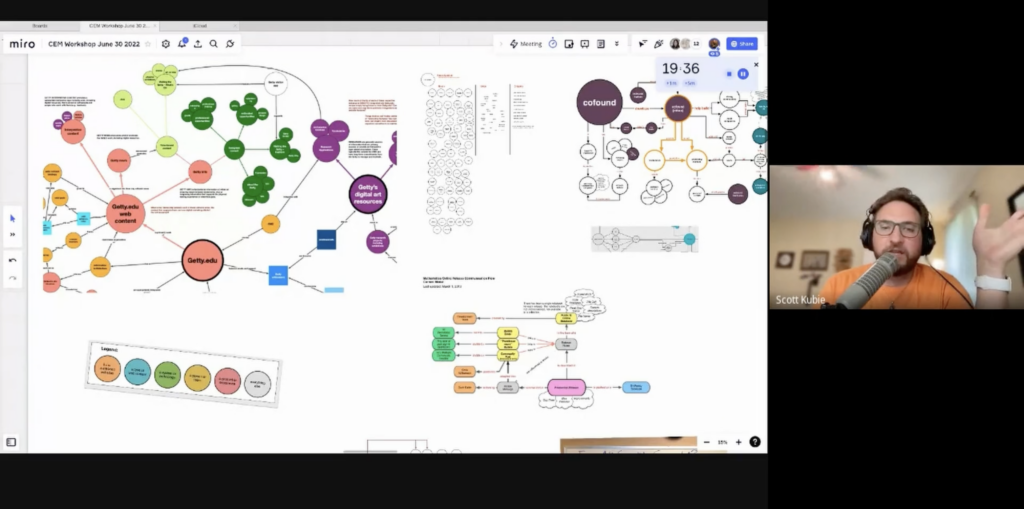
Good question. To fully answer it, we have to explore a few related, but distinct, terms:
- Digital strategy
- Sensemaking
- Content ecosystem mapping
- Content ecosystem maps
- Content ecosystems
- Content
Content ecosystem mapping is a sensemaking activity for digital strategy.
Digital strategy projects could include:
- designing and redesigning websites and omnichannel digital experiences,
- consolidating multiple websites,
- designing new apps and sites,
- adding new features to existing web apps,
- transforming analog services into digital services,
and so on.
In a design and strategy context, sensemaking is something we do in order to better understand an environment, problem, or situation. Performed together with relevant stakeholders, sensemaking can create strategic alignment, reduce friction, and increase buy-in for your projects. While sensemaking is part of everyone’s job to a certain extent, it is often directed by a consultant, design leader, content strategist, or information architect.
What is a content ecosystem map?
A content ecosystem map is a diagram that depicts your content ecosystem.
Cute. Okay, fine, what is a content ecosystem then?
At the highest level, your content ecosystem is whatever you decide it is during the process of content ecosystem mapping. Yes, this is a tautology of sorts. But that’s why I focus on the activity, not the diagram. Defining the edges of your current, future, or ideal content ecosystem in a useful way is part of the purpose of this work.
One way to think about your content ecosystem is as the overall context in which your content is used or experienced. In no way is your content ecosystem only limited to marketing content, nor only to website content. Nor is it limited to all of the content that you “own”. You could map the content ecosystem of a company knowledge base accessible only to employees. Or you could map your content ecosystem across partner channels, third-party directories, social media conversations, and more. The important thing is to figure out what you understand your content ecosystem to be.
Okay, I’m starting to get it. But why ‘content’ ecosystems? Why not product ecosystems, or just domain modeling?
The ‘content’ in content ecosystem mapping comes from content strategy, that wily, sometimes hard-to-define discipline that serves as a connective tissue between all the operational parts of your digital strategy. Content strategy is the intellectual lens being applied in the methodology of content ecosystem mapping, but it is not limited to solving “content problems”.
In fact, much like content strategy itself, content ecosystem mapping tends to uncover big sticky problems related to product management, change management, branding, operations, and more.
Typically, the ‘content’ in a content ecosystem map is all the “stuff” that comprises your brand or company’s digital footprint — your online territory. But again, deciding what stuff is in or out, and the boundaries of that territory, are part of the mapping process.
Let’s summarize:
- Digital strategy — Big decisions about your website, apps, online marketing efforts, etc.
- Sensemaking — Activities undertaken to help an individual or group understanding something better
- Content ecosystem mapping — A sensemaking activity for digital strategy
- Content ecosystem maps — The diagrams you make during content ecosystem mapping
- Content ecosystems — The world in which your content is experienced
- Content — The “stuff” of your content world, in the content strategy sense of the word
Okay, seems weird but I’m kind of interested, I think? How can I learn more?
Great question, my sassy friend. I have a collection of resources on this website all about content ecosystem mapping. I also teach hands-on training workshops on the topic from time to time.